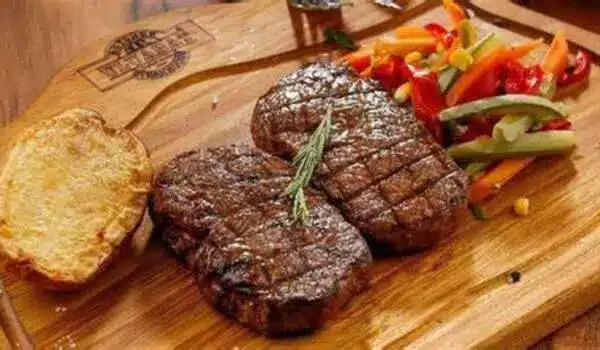As the world’s population grows, produced or lab-grown meat (animal muscle and fat cells generated in a laboratory) has emerged as a potential option to meet future protein demands. These cell cultures could also be grown using edible and affordable plant proteins. Researchers in ACS Biomaterials Science & Engineering report that glutenin, a non-allergenic wheat protein, successfully developed striated muscle layers and flat fat layers, which could be combined to form meaty textures.
To make lab-grown meat, cultured cells must adhere to a base or scaffold. Plant proteins are appealing candidates for scaffolds because they are edible, plentiful, and affordable. Previous research shown that a plant-based film containing glutenin was an effective substrate for cultivating cow skeletal muscle cells. However, for this procedure to provide a plausible meat-like substitute, the muscle cells must form aligned fibers similar to the feel of actual tissues.
The researchers isolated glutenin from wheat gluten and formed flat and ridge-patterned films. Then they deposited mouse cells that develop into skeletal muscle onto the protein bases and incubated the cell-covered films for two weeks.
Additionally, fat needs to be included in the 3D structure to replicate the composition of traditional meat products. To take advantage of using glutenin, a protein in gluten that people with celiac disease or a gluten sensitivity don’t typically react to, Ya Yao, John Yuen, Jr., Chunmei Li, David Kaplan and colleagues wanted to develop plant-based films with it to grow textured muscle cells and fatty layers.
The researchers isolated glutenin from wheat gluten and formed flat and ridge-patterned films. Then they deposited mouse cells that develop into skeletal muscle onto the protein bases and incubated the cell-covered films for two weeks.

Cells grew and proliferated on both flat and ridged films. As expected, compared to cells grown on control films made of gelatin, the performance of the glutenin-based films was inferior but sufficient. The researchers say further work needs to be done to improve how cells attach to the plant-based film to get closer to the growth on the animal-derived biomaterial. During the second week of the culture, the cells on the patterned film formed long parallel bundles, recreating the fiber structure of animal muscles.
In another experiment, mouse cells that create fat tissues were placed on flat glutenin sheets. During the incubation period, cells multiplied and differentiated, leaving visible lipid and collagen deposits.
The cultured meat and fat layers connected to the edible glutenin films can be stacked to create a 3D flesh-like replacement protein. Because the glutenin material basis promoted the formation of both textured animal muscle and fat layers, the researchers believe it might be employed in a method for producing more realistic cultured meat products.
















